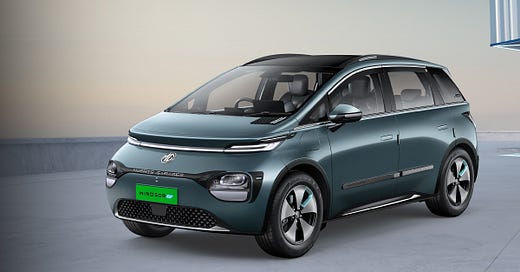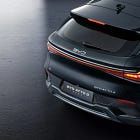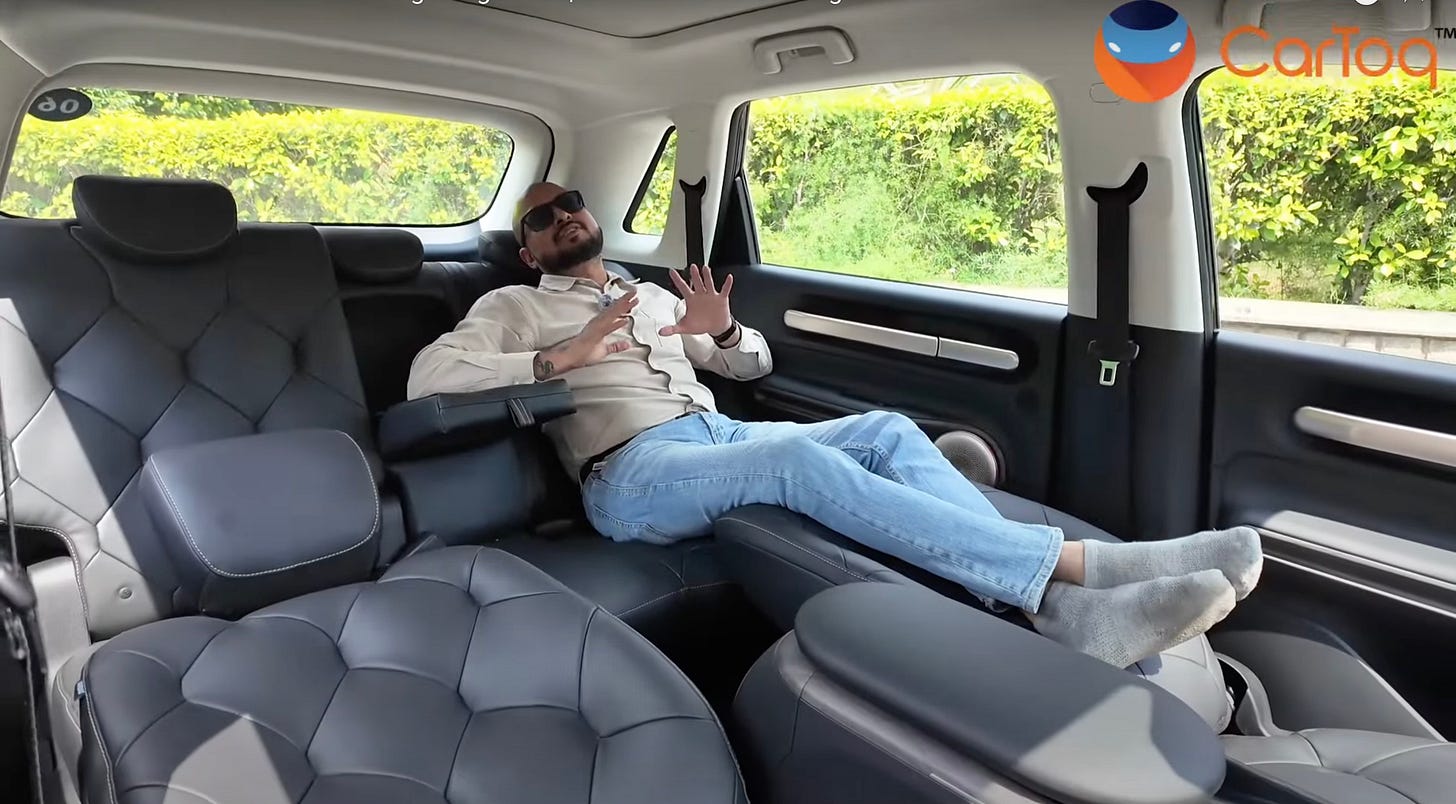The M.G. Windsor Is the Best City Car
This is a review of the old Windsor, not the better Windsor Pro.
New technology initially has too many rough edges: it’s too costly. We don’t know whether it will be reliable, and whether problems can be fixed quickly and economically. We don’t know how long it will last. We don’t know how the economics will work out. We don’t know whether and how much we need to change our life to fit the technology, rather than the other way around. New technology can even be a toy:
For all these reasons, may people don’t buy new technology on day 1, which is the right decision.
For example, Windows 95 was based on old technology that most people used, and Microsoft developed Windows NT (New Technology) in parallel, which required an astronomical 32 MB memory and a Pentium, in days when Windows 95 ran with 8 MB memory without requiring a Pentium. 16 MB was a stretch, and 32 was inconceivable. Windows NT was impractical. Similarly, in initial days, EVs were impractical.
In the early days of any technology, affordable products are bad:
And good products like the BYD Atto 3 are unaffordable at 40 lakh1:
Then, as technology marches forward, flaws are eliminated one by one. With every step, a few more users become a good fit for the technology. But the consensus still says, “Technology X not ready yet”. Despite that, technologists keep diligently hammering away behind the scenes.
Then, one day, it suddenly becomes ready. We have an excellent product. Most flaws have been worked out, and it becomes clear what an advancement the new technology is. What was clear to the builders for years suddenly becomes clear to buyers. Until that point, buyers have seen only bits and pieces, like appreciating EVs for their great acceleration while rejecting them for other reasons. But when it comes together, people can suddenly see that the whole adds up to more than the sum of the parts.
We’ve reached that point with the Windsor E.V. crossover2.
Imagine you’ve cooked a wonderful pulao but forgotten to add salt. No matter how good it is otherwise, people won’t be able to appreciate it. Then, when you add salt, people will suddenly say, “Oh, this awesome pulao is what you were cooking all along!”
With the Windsor, M.G. has added salt to the pulao.
Let’s see what makes the Windsor so good:
Even before you get into it, it wows you with it elegant and streamlined look:
This is a welcome relief from many identical-looking vehicles. If you swapped the logo on an average “SUV” with that of another brand, many people won’t be able to tell the difference.
Then, when I entered the Windsor, I was blown away. I never sat in any car that looks so minimalist3 and space-age. This redefined my idea of what a car could be like. I didn’t even think that I’d have access to such a car short of the unknown point in the future at which Google self-driving technology is available at a showroom near me. The quality of the interior is also high, unlike the XUV 400.
As a car that seems backported from the future, the Windsor has the largest screen I ever saw in a car: 15.6 inches. It’s super spacious and you can see, for example, a lot of information in the map. It’s crisp, bright and colorful. It reminded me of the kind of quality you get in the Macbook Pro’s screen. The tomato-colored Apple Music logo was so resplendent in its red and pink. Google Maps never looked so beautiful. I want a computer on wheels, which the Windsor is.
Then, when I started driving, I was in another world. The car has the best suspension I ever experienced. I didn’t feel any road bumps or imperfections. The car glides over the road!
There’s no vibration. The Windsor is smoother than the XUV 400.
At one point, when the salesman was driving, I thought we were going 70, but when I asked him the speed, I was surprised to hear that it was 115! The car does such an excellent job insulating you from the chaos outside that you travel encased in your cocoon of joy.
When I floored it from a standstill, it didn’t seem exhilarating. But when I asked how many seconds it took to reach 100, it was 9, which I realised was no slower than any petrol car I’ve driven. It had no vibration and less noise, and so didn’t feel fast. The power is delivered smoothly and linearly. This reminds me of when4 I flew in a propeller-driven plane: it was flying at 450 kph, and it was noisy, there were a lot of vibrations, and we were buffeted. Then, I flew in a jet, and it was quiet and stable, with few vibrations. When I looked out the window, I couldn’t even tell if we were moving fast, but we were actually flying at 800+ kph: the jet flies fast, but feels slow. The Windsor is like the jet. Advanced tech should be fast, not feel fast. I can floor the Windsor in Sport mode without it being too disturbing5 as it would be if I did it in a gas guzzler. When I floor it, the acceleration comes on smoothly, not abruptly. Compare it with a Seltos where flooring it suddenly pushes you back in your seat. M.G. has optimised the jerk, the derivative of acceleration. This is the same reason why you could be sitting in a stopped Vande Bharat and when you look up a short while later, you’re traveling at 100 kph, and you never noticed the train start moving. People are sensitive to jerk more than acceleration.
The car can instantaneously accelerate from 30 to 66 kph. In a road with room for only one lane in each direction, I was cruising at 30, when I spotted a gap ahead. I was able to swing into the oncoming lane, rocket forward at 66 kph, brake quickly to 30, and merge smoothly back into my lane, without forcing anybody to slow down for me, in either lane. All this in a couple of seconds. Petrol cars can’t do this — they have to downshift, and the turbo has to kick in. Even the most responsive transmission, the DCT, is no match for electric. The best transmission is an electric.
I felt very comfortable making fast, precise maneuvers in the Windsor just after an hour or two. I didn’t reach this level of comfort in any other car despite spending far more time in them. A friend told me that this is because the Windsor’s steering is precise.
Another time, I was traveling in the right lane of a two-lane road, and the left lane became empty. Immediately, a Mercedes SUV multiple cars behind me switched into the left lane and started accelerating. Its speed was 20 kph faster than mine. I swung out into the left lane, and eliminated the 20 kph gap instantly. In this car, 20 kph acceleration doesn’t take a measurable amount of time. It happens instantly. I then accelerated further. The Mercedes didn’t have to brake because I came in his way, because I didn’t. In this car, nobody can overtake you unless you give them permission6.
This car is so much fun to drive, more than any other car, because it’s so responsive. It’s a machine that can keep up with me. This is exhilarating.
The Windsor also handles bumps at speed, like 40 kph.
In some electric vehicles, the regen is strong and makes for uncomfortable acceleration / deceleration cycles. In the Windsor, the lowest level of regen is smooth, like everything else in the car — it decelerates only slowly, like by 1 kph at a time when driving down a bridge7.
This is the kind of car that, if aliens encountered the first thing after they landed, would make them say, “This civilization is more advanced than we thought.”
There’s a negligible difference between eco and sport modes.
The gear lever is on the steering stalk, and moves in the opposite direction as the indicators. If you think you have to push it downward to switch to a certain gear, push it upward instead.
The horn is loud.
The parking camera has curved lines that move as you rotate the steering wheel. These show the path your car will take. The parking camera also has green, yellow, and red lines that indicate how close something is. These are available both in reverse and forward. However, beeping that indicates you’re close is available only while reversing.
The center console has three cup holders. In addition, the dash has one each for the driver and passenger, but they’re far away from the seat. You have to stretch. Below the center console is another storage area.
Unlike many cars, there’s no storage for keys near the power window controls.
There’s no frunk, which I’d expect from an electric car.
The car has cruise control, which isn’t adaptive.
The boot is spacious, and has a light
Comfort
- Poor headroom: even when the seat is at its lowest position, my head was close to the windshield header.
+ Electrically adjustable seats.
+ 6-way
- No thigh adjustment
+ Both the front and rear seats recline:
If you recline all the way, you can sleep. If you recline less, you can observe the sky or the trees through the beautiful panoramic moonroof. The glass doesn’t open; only the opaque covering opens and closes.
± The seat is very contoured and unique. It also feels different from other car seats. My back felt more supported on both sides, making me feel more secure.
± The car has automatic wipers, and you can adjust the sensitivity. This should fix the problem I’ve had in some cars, which is that that the wipers turn on later than I want them to.
± You can configure the car to automatically unlock when you approach it with the key in your pocket, without having to press a button.
± Outer door handles are flush with the car. When I unlocked the car from the inside, the handles extended outward and remained there till I locked it.
+ The car has an electronic parking brake and auto hold.
Cooling
+ Ventilated seat
+ Climate control
- No rear window sunshades
- The panoramic moonroof doesn’t help the car cool down the way a panoramic sunroof does in minutes when it’s been parked for hours in the afternoon summer sun.
+ There’s an option in settings to limit AC when the car is low on charge.
- Single-zone AC.
- The glove box isn’t cooled
Digital features
+ Both USB-C and -A port
- CarPlay works only on A
- CarPlay repeatedly kept prompting me to pair and kept giving errors. We eventually got it to work by rebooting the infotainment system.
- You can’t hold down the volume down button on the steering wheel to reduce volume significantly from 100. You have to press repeatedly. This is extra cognitive load that should be focused on driving.
- There’s no play / pause button on the steering wheel. You have to use the touchscreen, which is dangerous when driving.
- The music quality is not as good as the Creta’s, which is the best I’ve experienced.
Safety
+ Auto headlamps.
± There’s no fog lamp.
+ The car has a TPMS, and one that presents the pressure and temperature in each tyre with the level of UX design we expect in 2025, and that we see in smartphone apps, unlike every other car’s TPMS, which looks like Windows 3.1.
Front passenger seat
± No electrical adjustment
- Height isn’t adjustable
- Poor legroom: I can stretch my right leg fully but not my left.
Rear seat
- The legroom is insufficient for me to stretch my legs comfortably.
- The seat is short and didn’t support my thighs fully
+ Panoramic window both in width and height. It’s beautiful to watch the world go by. MPVs often have such windows.
- No power, whether 12V or USB.
+ Can open or close AC vents, but you can’t turn off the rear AC without turning the front off as well
- The headroom is poor even when the moonroof is open.
- There’s a lot of armroom8: when the front seat is all the way front you can barely touch it.
+ There’s a center armrest
Range
The fly in the ointment is range. I measured 202 km9 with aggressive driving, both city and highway. MotorInc obtained a range of 200 km. Motorbeam got 206. Noise Facktory got 218. Sorry for the Hindi links. NDTV got 220. If you’re taking a long highway trip, your range will be lesser, since EVs do worse on the highway.
Since whichever car I buy will be my only car, I won’t be buying the Windsor.
The car comes with both a 3KW portable charger that can be powered off any 16 amp socket, say if you’re driving to a cottage that has no EV charger. And a 7KW charger that’s permanently installed at your house.
M.G. claims the car fast-charges from 0-80% in 55 minutes if you’re using a charger that can supply 80 kw. For road trips, the charging time till 80% is what matters, not 100%, since the last 20% will take a lot more time, so you’ll reach your destination sooner if you stop charging at 80%.
The car comes with a CCS2 port, as most EVs do in India.
Economics
This wonderful car is available for a steal: just 18.5 lakhs on-road in Bangalore for the best variant. Some products are fine, but great for a price. The Windsor is not that — it’s both great, and all the more great for its low price.
Before I test drove the Windsor, I was considering buying a Creta for 26. After the test drive, I feel that would be a cross-grade, because the Creta has more range and space but is otherwise worse. I can’t justify spending 7.5 lakh more for a cross-grade over the Windsor.
The first buyer gets a lifetime warranty on the battery. But we don’t know how much the battery has to degrade before M.G. will replace it free. For example, Ather won’t replace the battery free unless it has degraded below 30%. So, if it has degraded to a third of its original capacity, the reduced range may not be enough for you, but Ather won’t replace it free. Similarly we don’t know what the terms are for the Windsor’s battery. I have also heard of US companies defining a lifetime warranty as protecting only against manufacturing defects. One customer took his failed product to the company, who looked at it and said, “There’s nothing wrong with its manufacturing, so it’s not covered under the warranty.” So the devil is in the details.
If you resell it, the subsequent buyers get a warranty of 8 hours / 1.6 lakh km, probably from the date you bought it. They’ll be taking a risk as to what happens after that.
In fact, since EVs with a much better range are already out (Tata Curvv EV 55 kwh) or will be soon (Mahindra BE 6 79 kwh), you won’t get much if you resell the Windsor even 4 years after purchase and having driven only 10K km — only a few people would want to buy a short-range EV.
When Warren Buffett was asked how long he likes to hold on to a share, he said he likes to keep it forever, and if the share market closed the day after he bought the share and so he couldn’t sell it any more, he’d be happy to own the share. Similarly, buy the Windsor only if you want to keep it till the end of its life.
Conclusion
The Windsor is not perfect, and its flaws rule it out for me. If the Windsor or Tata Curvv EV 55 kwh meets your needs and will do so for a decade, buy it.
The reason I’m excited about the Windsor is that it’s a harbinger of upcoming EVs. If M.G. can do it, so can others, which means we’ll have amazing EVs in 2025. I’ll wait till the Mahindra BE 6 and other great EVs expected in 2025 to launch.
When the tipping point is reached, as it has now, it takes some time before it’s broadly recognised, till the majority of buyers realise that the game has changed. Some of these uninformed buyers10 will buy a fossil fuel-powered car tomorrow. That would be like buying
after
On-road, Bangalore, for the top-end version.
It’s unibody / monocoque.
M.G. went a little too far in their quest for minimalism. They should tone it down a bit. But the ideal car is still closer to the Windsor than to legacy cars.
In 2008.
On second thoughts, I’d want Sport mode to accelerate as fast as possible without regard for smoothness. When I want smoothness, I can use Eco or Normal.
Of course, one should be courteous towards other drivers and treat them the one would like to be treated.
I wish I could turn off regen except when I press the brake pedal.
How far you can stretch your arms forward.
M.G. has now launched a Windsor Pro that has a bigger battery, an electric tailgate and 12 ADAS features. The seats are unfortunately white, which become dirty. I sat in this but didn’t test-drive it.
A fossil-fuel powered car purchased today will have poor resale value in upcoming years since there would be few people who would want an obsolete car (less demand) and many other people like you who would be selling their clunkers (high supply). This demand supply imbalance will cause resale values to fall through the floor.










